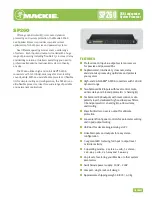
Appending 5 Lines of Data to an Existing Data Set
"ALLOC DA(weekly.input(mar28)) F(myindd) SHR REUSE"
"ALLOC DA(yearly.output) F(myoutdd) MOD"
"EXECIO 5 DISKR myindd (FINIS"
"EXECIO 5 DISKW myoutdd (FINIS"
Note:
Do not use the MOD attribute when allocating a member of a PDS to which
you want to append information. You can use MOD only when appending
information to a sequential data set. To append information to a member of a
PDS, rewrite the member with the additional records added.
Copying Information to and from a List of Compound Variables
When copying information from a data set, you can store the information in the data
stack, which is the default, or you can store the information in a list of compound
variables. Similarly, when copying information back to a data set, you can remove
information from the data stack, which is the default, or you can remove the
information from a list of compound variables.
Copying Information from a Data Set to a List of Compound Variables:
To
copy an entire data set into compound variables with the stem
newvar.
, and then
display the list, write the following instructions.
Copying an Entire Data Set into Compound Variables
"ALLOC DA(old.data) F(indd) SHR REUSE"
"EXECIO * DISKR indd (STEM newvar."
DO i = 1 to newvar.0
SAY newvar.i
END
When you want to copy a varying number of lines to compound variables, you can
use a variable within the EXECIO command as long as the variable is not within
quotation marks. For example, the variable
lines
can represent the number of lines
indicated when the exec is run.
Copying a Varying Number of Lines into Compound Variables
ARG lines
"ALLOC DA(old.data) F(indd) SHR REUSE"
"EXECIO" lines "DISKR indd (STEM newvar."
Copying Information from Compound Variables to a Data Set:
To copy 10
compound variables with the stem
newvar.
, regardless of how many items are in
the list, write the following instructions.
Note:
An uninitialized compound variable will default to the value of its name. For
example, if
newvar.9
and
newvar.10
do not contain values, the data set will
receive the values
NEWVAR.9
and
NEWVAR.10
.
Using EXECIO to Process Information ...
Chapter 12. Processing Data and Input/Output Processing
161
Summary of Contents for TSO/E REXX
Page 1: ...z OS TSO E REXX User s Guide SA22 7791 00 ...
Page 2: ......
Page 3: ...z OS TSO E REXX User s Guide SA22 7791 00 ...
Page 10: ...viii z OS V1R1 0 TSO E REXX User s Guide ...
Page 12: ...x z OS V1R1 0 TSO E REXX User s Guide ...
Page 14: ...xii z OS V1R1 0 TSO E REXX User s Guide ...
Page 18: ...xvi z OS V1R1 0 TSO E REXX User s Guide ...
Page 20: ...2 z OS V1R1 0 TSO E REXX User s Guide ...
Page 58: ...Tracing Expressions with the TRACE Instruction 40 z OS V1R1 0 TSO E REXX User s Guide ...
Page 78: ...60 z OS V1R1 0 TSO E REXX User s Guide ...
Page 86: ...Built In Functions 68 z OS V1R1 0 TSO E REXX User s Guide ...
Page 128: ...Issuing Other Types of Commands from an Exec 110 z OS V1R1 0 TSO E REXX User s Guide ...
Page 136: ...Debugging Execs 118 z OS V1R1 0 TSO E REXX User s Guide ...
Page 170: ...Protecting Elements in the Data Stack 152 z OS V1R1 0 TSO E REXX User s Guide ...
Page 201: ...Part 3 Appendixes Copyright IBM Corp 1988 2001 183 ...
Page 202: ...184 z OS V1R1 0 TSO E REXX User s Guide ...
Page 222: ...Using Variables 204 z OS V1R1 0 TSO E REXX User s Guide ...
Page 226: ...208 z OS V1R1 0 TSO E REXX User s Guide ...
Page 238: ...220 z OS V1R1 0 TSO E REXX User s Guide ...
Page 241: ......
















































